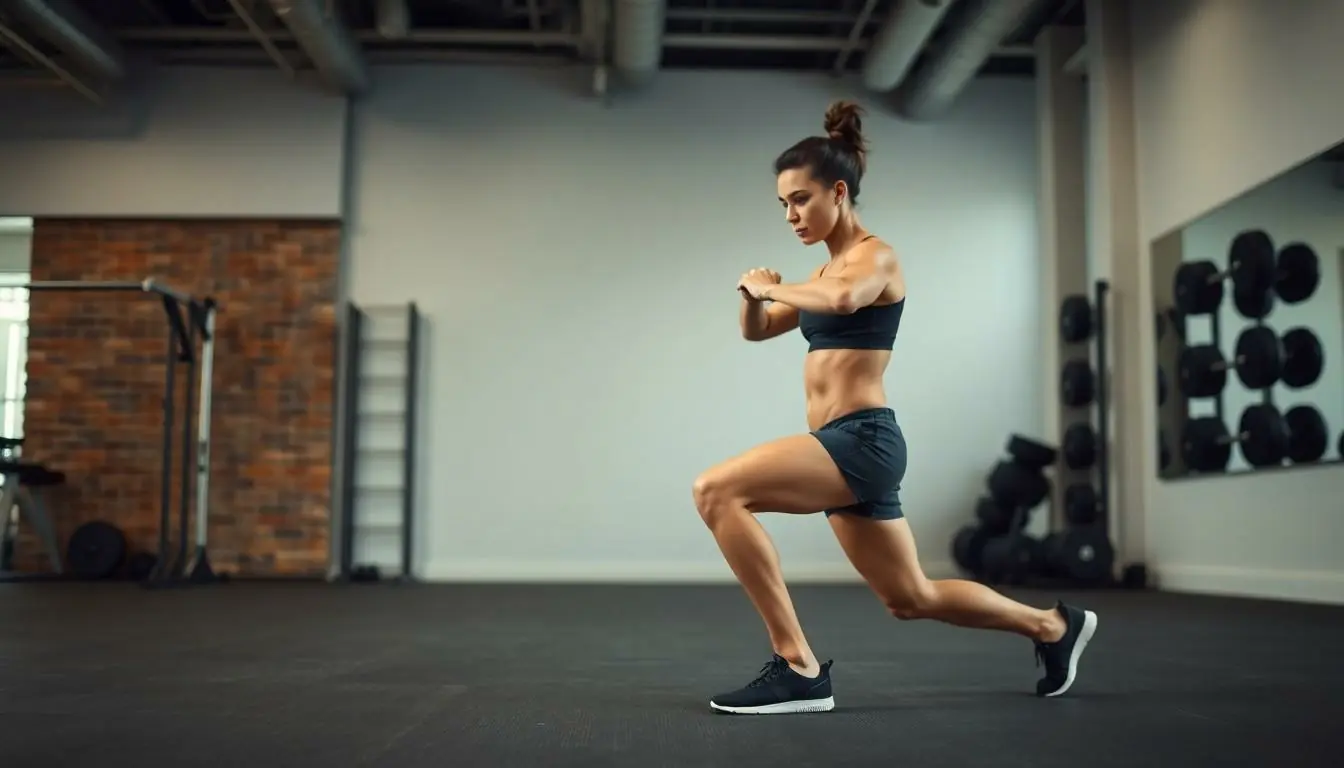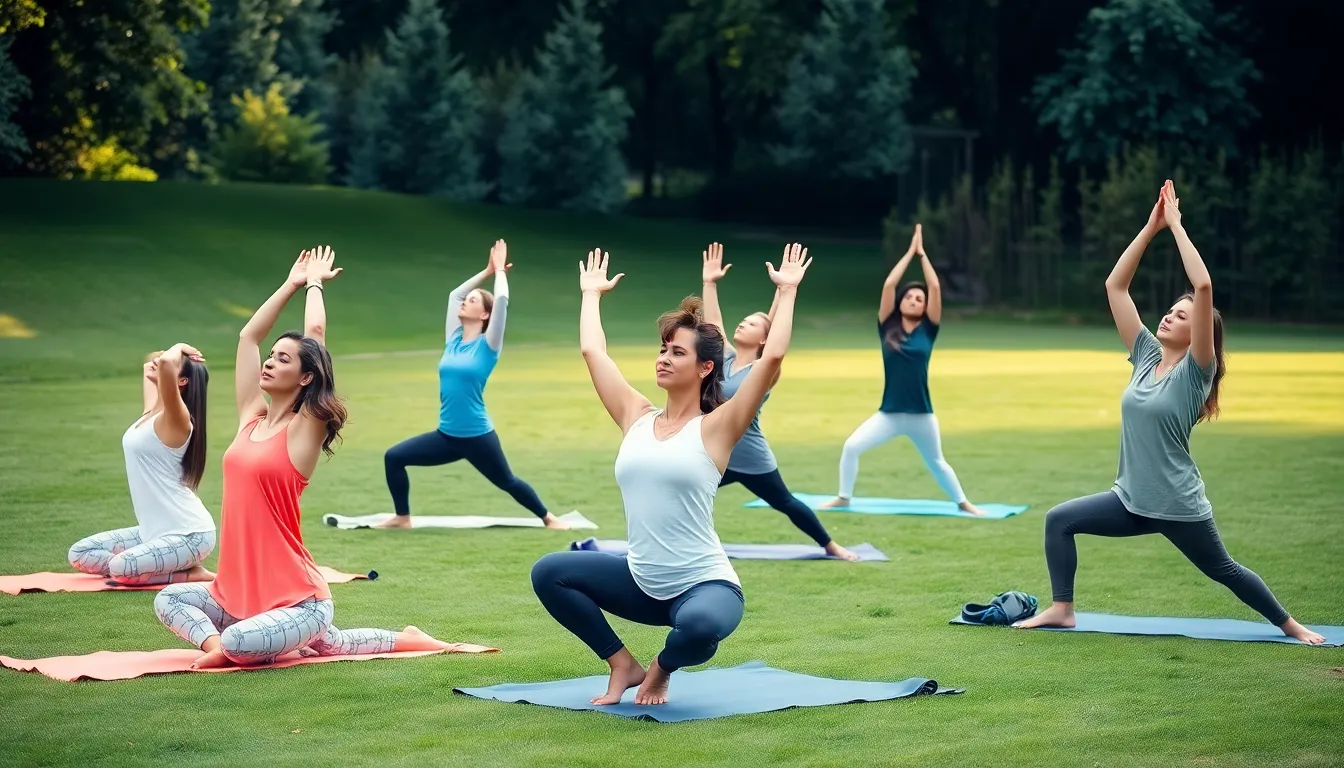When it comes to leg day, most people focus on quads and hamstrings, leaving those often-neglected adductors feeling lonely. But let’s face it—who wants to skip leg day and end up with chicken legs? Adductor exercises not only help sculpt strong inner thighs but also play a crucial role in overall leg stability and athletic performance.
Table of Contents
ToggleWhat Is Adductor Exercise?
Adductor exercises focus on strengthening the adductor muscles located in the inner thighs. These muscles play a crucial role in stabilizing the legs during various activities. A strong adductor group enhances overall lower-body strength and physical performance.
Performing adductor exercises helps prevent muscle imbalances, which often occur when individuals primarily target the quadriceps and hamstrings. Imbalances can lead to issues like decreased stability and increased injury risk. Including adductor exercises in a workout routine improves leg function, making movements like squats and lunges more effective.
Examples of effective adductor exercises include the adductor machine exercise, side lunges, and resistance band exercises. Each of these options targets the adductor muscles differently, offering variety for training.
Focusing on the adductors also aids in achieving well-defined inner thighs, appealing to those pursuing aesthetic goals. Strong adductors contribute to better performance in athletic events, enhancing activities that require lateral movements, such as basketball and soccer.
Incorporating adductor exercises into regular training not only strengthens the inner thigh muscles but also promotes overall lower body balance and functionality. Maintaining a comprehensive fitness routine ensures that all muscle groups receive equal attention, fostering better athleticism and reducing the likelihood of injuries.
Benefits of Adductor Exercise

Incorporating adductor exercises offers multiple advantages while enhancing lower body training. This section explores key benefits.
Improved Muscle Strength
Adductor exercises significantly strengthen muscles in the inner thighs. Stronger adductors contribute to enhanced leg stability during various movements, such as running and jumping. By targeting these muscles, individuals experience a balanced development in their lower body. Exercises like side lunges and the adductor machine effectively build strength and endurance. Increased muscle strength promotes better performance in other exercises, contributing to overall fitness.
Enhanced Athletic Performance
Athletic performance improves by integrating adductor exercises into training routines. These exercises play an integral role in multi-directional movements often seen in sports, enhancing agility and speed. A stronger adductor muscle contributes to better control and precision during athletic activities. Consequently, athletes can achieve improved results in sports like soccer, basketball, and tennis. Individuals may notice enhanced ability to change direction swiftly and efficiently.
Injury Prevention
Injury prevention becomes a crucial benefit of strengthened adductors. A well-developed inner thigh muscle group stabilizes the pelvis and knee joints, reducing the risk of strains and injuries. By incorporating adductor exercises, individuals can address muscle imbalances, which often lead to injuries. Consistent engagement of these muscles promotes functional strength and joint health. Ultimately, prioritizing adductor exercises fosters a safer workout environment, especially during high-impact activities.
Types of Adductor Exercises
Adductor exercises include a variety of approaches, each targeting the inner thigh muscles effectively.
Bodyweight Exercises
Bodyweight exercises rely solely on an individual’s weight to build strength. Examples include side lunges and standing side leg lifts, both of which enhance adductor engagement without equipment. Variations in movement, such as lateral step-outs, help in recruiting different fibers within the adductor muscles. Additionally, these exercises improve balance and stability during lower-body movements. Practicing bodyweight adductor exercises can be performed anywhere, making them accessible for anyone seeking to strengthen their inner thighs.
Weighted Exercises
Weighted exercises further amplify the effectiveness of adductor training. The adductor machine provides targeted resistance, allowing controlled and focused workouts. Dumbbell side lunges and cable adduction exercises introduce external weight, increasing the challenge and promoting muscle growth. Integrating weights also aids in improving overall leg strength, contributing to athletic performance. Variations such as kettlebell sumo squats add depth to training routines, emphasizing adductor involvement. Consistent practice of weighted exercises optimizes muscle development, resulting in more defined and stronger inner thighs.
Tips for Effective Adductor Workouts
Effective adductor workouts require attention to form and consistency in training. Focus on proper technique and integration into regular routines for optimal results.
Proper Form and Technique
Maintaining correct form throughout adductor exercises is crucial. Align the body correctly to avoid injury and maximize muscle engagement. It’s essential to engage the core and keep the back straight during side lunges. In addition, control the movement speed for better muscle contraction. Ensure the knees track in line with the toes to prevent strain. Use a full range of motion for each repetition, which enhances strength gains. Keep rest periods brief to maintain intensity during workouts. Focusing on these aspects leads to more effective adductor training.
Integrating Adductor Exercises Into Your Routine
Incorporating adductor exercises into weekly workouts is vital for balanced strength. Add them at the beginning or end of leg day sessions for increased focus. Aim for two to three sessions per week that include a mix of bodyweight and weighted options. Include different exercises, such as the adductor machine or resistance band movements, to prevent plateaus. Adjust volumes and resistance as strength improves to continue challenging the muscles. Current programming often neglects the adductors; however, prioritizing these exercises promotes leg stability and function. Consistency and variety are key elements for optimal training outcomes.
Incorporating adductor exercises into leg day routines is essential for balanced lower body strength and stability. By focusing on these often-overlooked muscles, individuals can enhance their athletic performance and reduce the risk of injury.
Whether through bodyweight movements or weighted options, there’s a variety of effective exercises to choose from. Prioritizing proper form and consistency ensures optimal results.
Strengthening the adductors not only contributes to well-defined inner thighs but also supports overall functional fitness. Embracing this comprehensive approach will lead to better workouts and improved athleticism.





